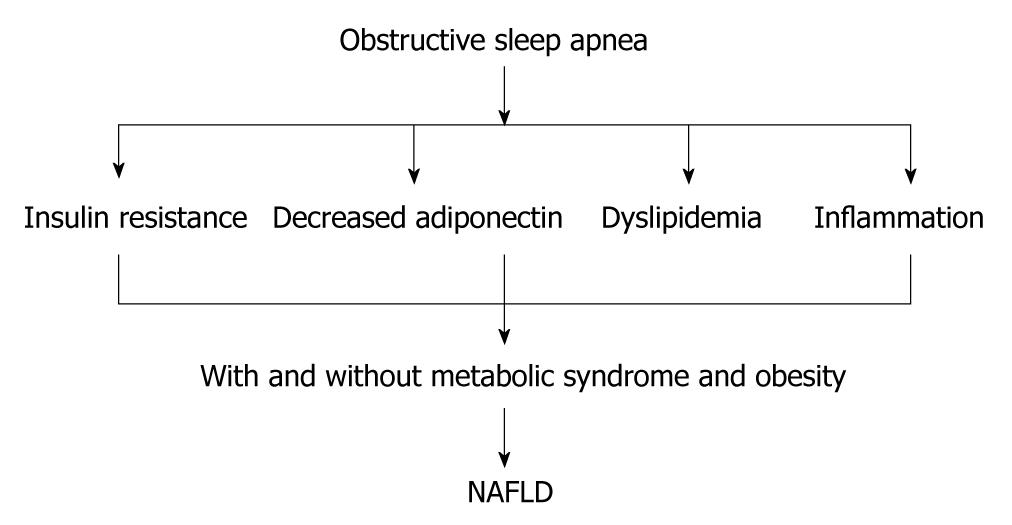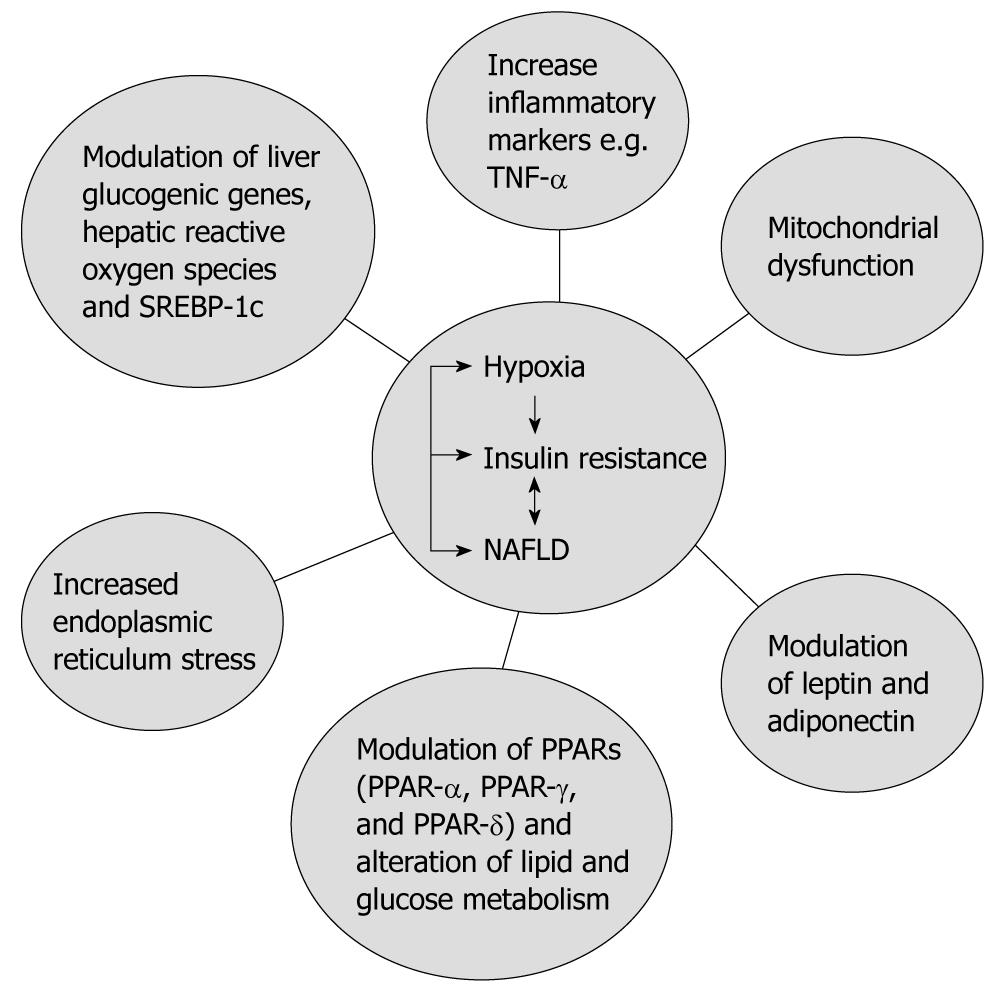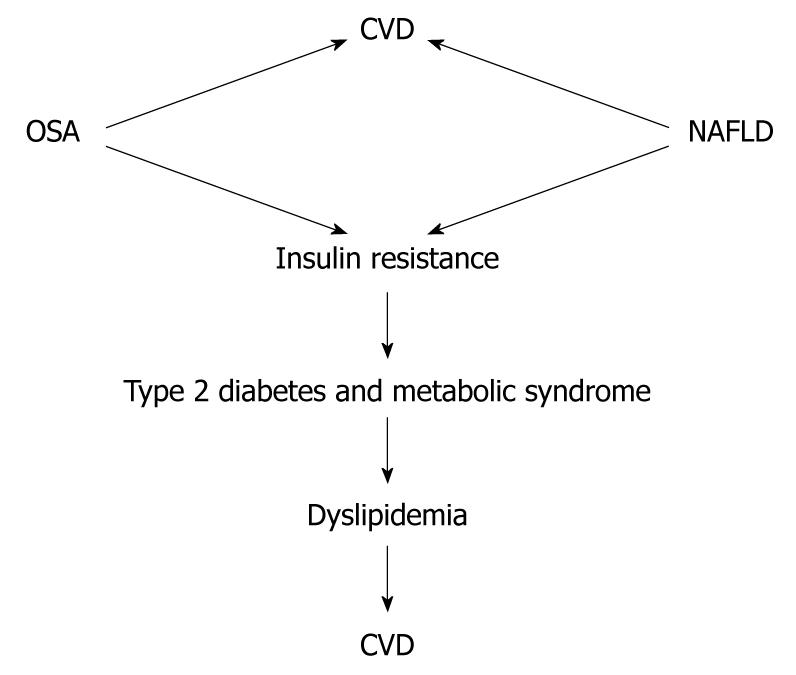Copyright
©2010 Baishideng Publishing Group Co.
World J Gastroenterol. Sep 14, 2010; 16(34): 4243-4252
Published online Sep 14, 2010. doi: 10.3748/wjg.v16.i34.4243
Published online Sep 14, 2010. doi: 10.3748/wjg.v16.i34.4243
Figure 1 Obstructive sleep apnea can induce non-alcoholic fatty liver disease through increasing insulin resistance, dyslipidemia and inflammation.
The presence of metabolic syndrome and obesity with obstructive sleep apnea (OSA) can aggravate non-alcoholic fatty liver disease (NAFLD). OSA might aggravate NAFLD in the absence of obesity and metabolic syndrome.
Figure 2 The complex relationship between non-alcoholic fatty liver disease, obstructive sleep apnea and insulin resistance.
TNF: Tumor necrosis factor; NAFLD: Non-alcoholic fatty liver disease; PPAR: Peroxisome-proliferator-activated receptor; SREBP-1c: Sterol-regulatory-element-binding protein-1c.
Figure 3 Association of non-alcoholic fatty liver disease and obstructive sleep apnea with cardiovascular disease.
Whether the combination of non-alcoholic fatty liver disease (NAFLD) and obstructive sleep apnea (OSA) has a synergistic effect in the incidence of cardiovascular disease (CVD) needs to be demonstrated.
- Citation: Ahmed MH, Byrne CD. Obstructive sleep apnea syndrome and fatty liver: Association or causal link? World J Gastroenterol 2010; 16(34): 4243-4252
- URL: https://www.wjgnet.com/1007-9327/full/v16/i34/4243.htm
- DOI: https://dx.doi.org/10.3748/wjg.v16.i34.4243















